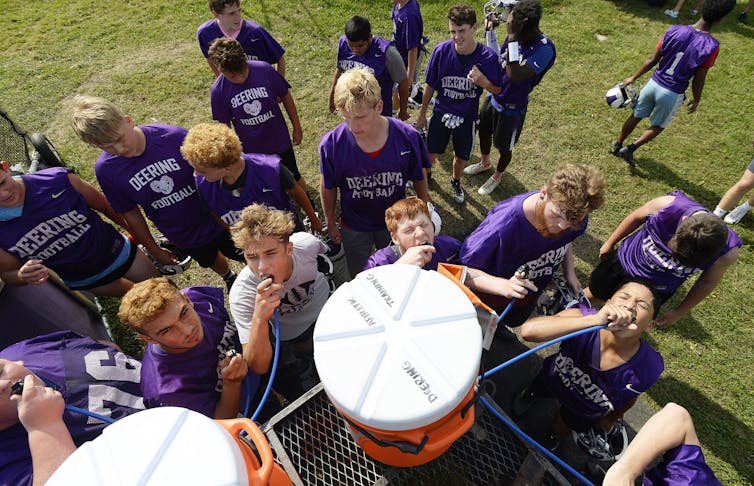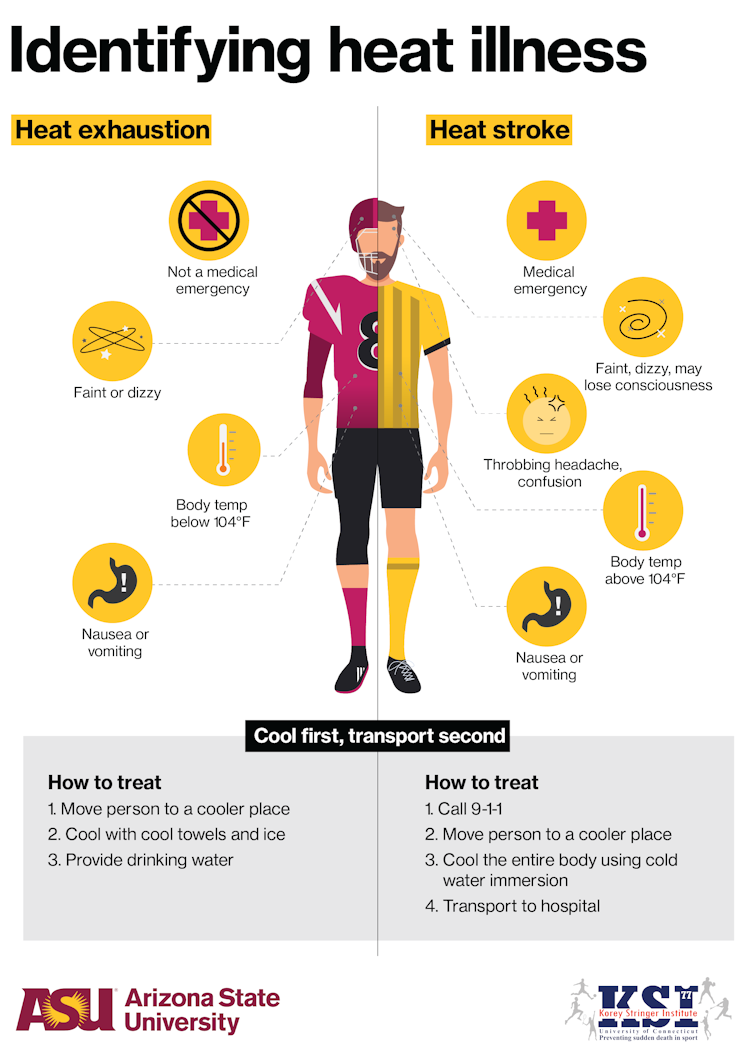People tend to lose prospective memory as they age.
Have you ever walked into a room and then wondered why you went there?
If you've experienced this phenomenon, you've had a prospective memory lapse.
Memory usually means remembering things that have already happened. But prospective memory is the ability to remember to do something in the future – such as stopping to get milk on the way home from work, calling your mom on her birthday or remembering to take your casserole out of the oven. Sometimes, errors lead to heartbreaking results – such as forgetting to take your toddler out of the car on a hot day.
I am a clinical neuropsychologist and a professor of psychology and neuroscience. For the past 30 years, my research has focused on this phenomenon, measuring prospective memory and looking for treatments to help those having problems.
Carrying out future intentions
Prospective memory is the ability to remember to remember, or to remember to carry out a future intention.
A future intention can be retrieved in two different ways. One is in response to something in your environment, such as a sight or a sound, that serves as a cue to do an intended action. Researchers like me call this an “event.” For instance, you see your co-worker and remember you have a message for them; you hear the timer go off and remember to turn off the sprinklers.
The other way is in response to time. Your dental appointment is scheduled for 2 p.m., but you plan to exercise for 30 minutes first.
One possible explanation for how people retrieve a prospective memory is known as the multiprocess theory.
According to this theory, sometimes you have to put forth effort to remember, such as checking the time repeatedly until it gets to be 2 p.m. Other times the memories come to you without effort, such as when you hear an alarm. As the above examples suggest, memories that have time-based cues, like 2 p.m., are usually more difficult to remember than those that have event-based cues, such as an alarm.
Brain regions at play
Older adults tend to lose prospective memory as they age. This may be because of brain changes in the aging prefrontal cortex.
But it's not all bad news. Older adults actually seem to do better than younger people in some situations when they are asked to remember things in their daily lives. We call this the age-prospective memory paradox.
The part of the brain that seems most responsible for prospective memory is an area of the frontal lobes, referred to as Brodmann's area 10. This area is involved with holding information in mind while doing a different simultaneous task.
But prospective memory is complicated. You have to form an intention and then remember to do it. This is the role of the prefrontal cortex, which is the part of the brain responsible for planning and organizing.
You have to recognize when it occurs, which involves the parietal lobe. You have to recall what the intention was – a form of retrospective memory that involves the hippocampus, a brain structure that is important for remembering facts, events and spatial routes, such as directions and locations.
Finally, in the case of time-based prospective memory, you need to keep track of time, and this likely involves a group of different brain structures. Thus, prospective memory can be impaired from problems in any of these regions.
Medical conditions, alcohol, culture
Over the past 30 years, my team and I have found that many medical conditions can affect prospective memory.
Excessive alcohol use seems to contribute to a decline in prospective memory. One study found that college students who drink heavily showed lower scores on prospective memory that is time-based. Also, those who experienced blackouts from drinking displayed deficits with event-based prospective memory.
Research on people with schizophrenia showed a correlation between poor prospective memory and lack of adherence to their medication regimen. While there are many reasons why someone might not take their medication, the study suggests some patients are simply not able to remember.
People with a brain injury often have prospective memory problems. They may sincerely intend to do a task but just are unable to remember. This may frustrate their families or health care providers, who may think the person is choosing not to follow instructions.
Parkinson's patients have particular trouble with time-based prospective memory. They know they have to do something but have difficulty judging the passing of time and miss the window to get it done.
People with multiple sclerosis also can have difficulty remembering their appointments. Our study measured 110 multiple sclerosis patients who had 1,600 unique appointments. About 3% of those appointments – roughly 50 of them – were no-shows that were related to prospective memory performance.
It may surprise you to learn that culture can also affect prospective memory. In a 2023 study, our team measured prospective memory in people who speak Spanish. We found that the differences in performance were affected by the degree of acculturation into U.S. culture. This may reflect the fact that the tests were created in the U.S. and so have a cultural bias, or it may be due to cultural differences, such as in the perception of time.
Prospective memory hacks
My colleagues and I have also been interested in studying techniques that might help improve prospective memory functioning.
We have had success in improving the amount of time someone with brain injury can hold an intention in mind using rote repetition and visual imagery.
A rote repetition intervention might say to the participant: “In exactly one minute, please clap your hands.” As they succeed, we slowly increase the time interval. Visual imagery involves imagining what will be happening at the time you need to complete the intention – what will you see, hear and smell, for instance.
You can try visual imagery, too. If you have a watch or phone with a calendar and alarms, setting those devices for tasks important to you is obviously helpful. Make a short recording on your phone or take a photo to remind you where your car is parked. There are also specific apps designed to remind you. Both Remember the Milk and Todoist have free versions.
If there is an item you don't want to forget, put it in front of the door so you can't miss it. If you use a calendar, keep it in a place you will see every morning. Put your phone, wallet or briefcase on the back seat next to the car seat.
Routine can help, too. If you have an important daily task, such as homework or exercise, set aside the same time each day for it.
In many people, something called implementation of intentions helps. Just say aloud, “When situation X arises, I will perform Y.”
For others, it helps to act out the intention as soon as you decide you want to do it. So if you want to remember to water your plants when you get home, pantomime doing it. Using the parts of your brain that control your muscles can help strengthen the intention.
The good news is that most of the time prospective memory works well automatically. But with more research, those of us who study prospective memory will come to have a better understanding of when it fails and what to do about it.
Sarah Raskin, Professor of Psychology and Neuroscience, Trinity College
This article is republished from The Conversation under a Creative Commons license. Read the original article.
















































